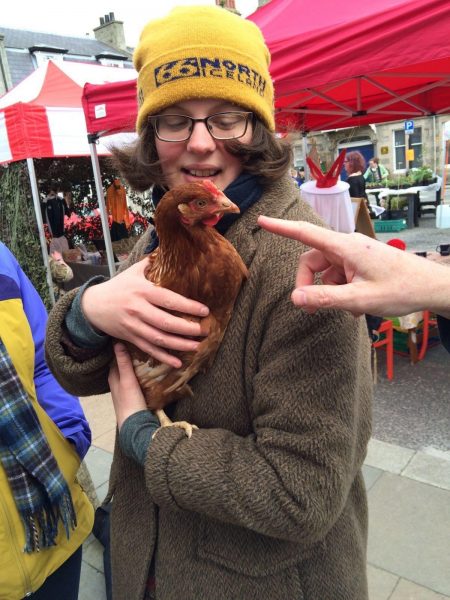In many ways, Sophie Lindsey’s artistic practice can be compared to finding a penny face-up on the sidewalk. It happens in the context of your daily routine and makes you feel something — maybe happy or lucky. It breaks the routine just enough to let you step back and appreciate a moment in an otherwise monotonous day.
Through research and interviews, zine-making, guerilla sign-production, and more, Lindsey inserts informed (often funny) doses of creativity into her environment. She will be the 2019 Winter Artist-in-Residence at Wave Pool — an experimental art space in Camp Washington, whose vision is to connect community to create change.
Lindsey and I spoke earlier this year, just after she returned to the United Kingdom from a residency in Spain. We began by talking about the project she was working on in Spain, and our conversation quickly sprawled into her artistic philosophy, past projects, and plans for her time at Wave Pool.
You were just in Spain for a residency.
Yeah it was with an organization called Can Serrat.
I was working on a project exploring art and tourism. How, when they intersect each other, they become quite strange. I was interested in the idea of reproductions and souvenirs and how works change when they are seen in a functional context, rather than a gallery setting where you see them. I have been exploring Trip Advisor as a place for art discourse and comparing that style of review to the more art-world criticism reviews.
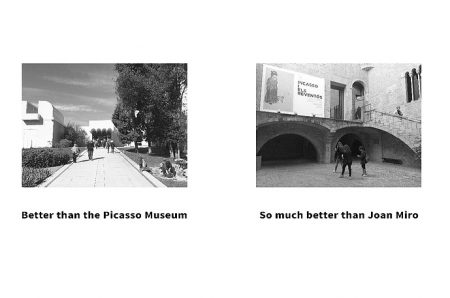
One of your pieces I thought relates here is the “Picasso vs. Miro” review comparison on your website.
Those were comments I took from reviews on Trip Advisor. I had already started looking there in 2015 during a residency. I got into looking at how people talk about art on Trip Advisor, because it’s very different than what you’re used to in the art world. But, it is equally as valid and takes in the wider experience.
So, things like the queuing to get in, or the politeness (or not) of the staff, and other interactions with people affect your perception of the art.
Did you go into that project thinking the comments would be valid or just silly?
I think, initially, they just struck me as a completely alternative way of talking about art. That can be refreshing, because you can get caught up, when talking about art, in a very dense and dry art-speak.
How does your Trip Advisor project relate to the rest of your body of work?
My work looks to take everything into account and consider the whole experience of what goes into viewing art. I’ve made work about gallery gift shops, bathrooms, and other areas that people use. With the Trip Advisor reviews, I was quite interested to hear other people’s reviews considering the wider context of the gallery — rather than how art critics present the art in isolation.
In reality, you can’t present things in isolation. A gallery or a museum is still a context.
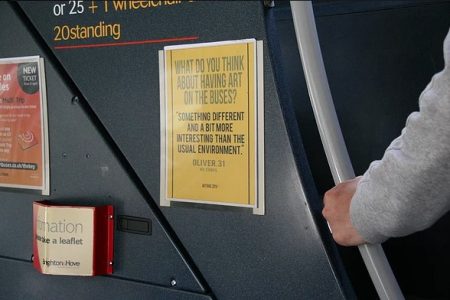
You’ve explored these ideas in some other places as well, haven’t you? Like public buses?
The bus work — I was involved in a group exhibition where all the artists took the bus environment as the context for making work.
I was quite interested — as this is a functional space, and was being used by the public — in how people perceived the art or anticipated how the art would interact in that space. So, before the exhibition, I interviewed passengers at bus stops and on buses to ask them how they would feel about having art in these spaces.
I collected different responses from the public. Some people thought it would make things more interesting, and others were concerned that it might cause more clutter. Other people said they thought they were not the right person to ask, which is very interesting. People don’t feel like they have the authority to make comments about art. They just have this mental barrier that it’s not something they understand. Whereas in reality, anyone has a right to an opinion on art.
Can you tell me about the organization you worked for in Scotland?
Just before I moved to Spain for my residency, I had been living for two-and-a-half years in the Northeast of Scotland in a very small town. I moved there to work for this arts organization, Deveron Projects, which is kind of like the rural Scottish equivalent to Wave Pool. It is a socially-engaged organization that works in this small community.
Deveron Projects is really interesting — they don’t exactly limit themselves to doing specifically art projects. They say they “work with artists,” rather than that they “create art.” It’s more thinking about issues creatively and seeing what artists can bring to a community. So, “Creative Research” is a good way of describing the different kinds of work that they do.
To describe your work, you have used the words “Projects” and “Interventions.” Can you talk about the reason for using that language to describe your artwork?
Yeah, and more recently I have been describing it as “performance.” But, I often think that “performance” is maybe too grand a word. So, I feel like “interventions” is a really good way to describe my work. It’s not too grand, like high art which demands your full attention. I quite like to just slip things into everyday environments. Some people who encounter it might not even consider it as art. It has that kind of ambiguity to it, which I like.
The phrase “projects” refers to these larger projects around ideas, like the one I did in Spain — this project surrounding art and tourism. A project would encompass a big subject of research which can then inform future interventions or performances.
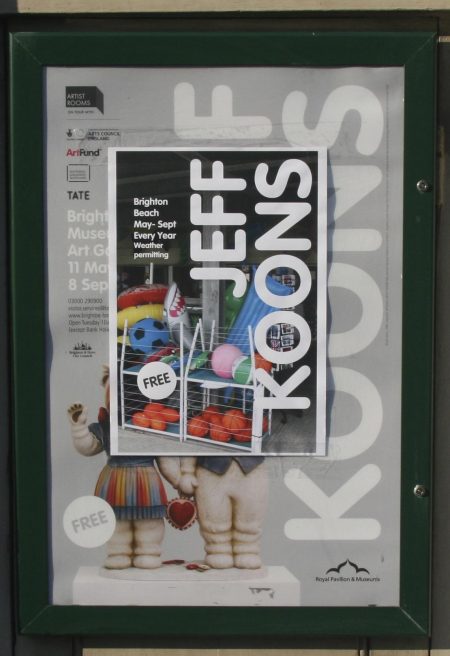
I’d love to know more about your background in art. Were you always interested in being an artist? Has your view on what makes an artist changed?
Growing up, I was always interested in doing art. But, it was definitely different than what I am doing now.
My undergrad at Brighton really helped me articulate my thinking towards this approach that I now have. Then, seeing a retrospective in London of Jeremy Deller, who was not trained as an artist and did art history, instead. He utilized situations and performances and interventions, rather than traditional artistic mediums. That was something that really opened my eyes to what I could do. Finally, I found other solutions to realize my ideas. Because before that, I was struggling with feeling like I had to specialize in a more traditional medium.
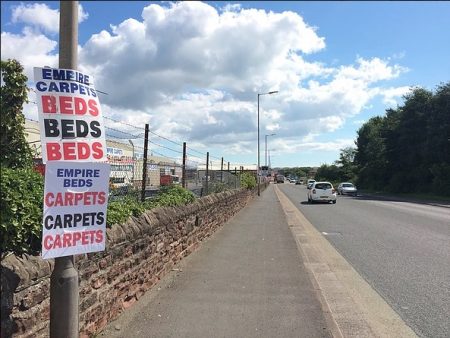
“Beds, Beds, Beds.” This is a sign you created, and it made me laugh out loud. There is definitely a sense of humor in your work. Why do you think it is important to have an element of humor? Or, does it just happen naturally?
I think it does happen naturally. But, I think it is also to do with what I like, and my interests. It is important not to take myself too seriously, and that expands to the world around me. It’s just funny — all these systems and conventions we have constructed to make up this world around us. And, that those things demand certain kinds of behavior or certain interactions. I’m just quite interested in challenging those or acting a bit differently. Putting something strange into these contexts to make people stop and question their environment a little bit more than maybe a lot of people do. And, that can be kind of funny.
What plans do you have for your residency at Wave Pool?
I want to do a project that was based on an article that I found, which was a study about the sense of humor in the U.S. It named Cincinnati as the “Least Funny City in America,” which I thought was really funny. Completely unjust, I’m sure. But, I just became interested in this idea of jokes and humor. How it is possible to really get to know a place through the jokes told within it. Through the local history and the narratives, demographics, the local news and current affairs. There are so many things that affect the jokes that we make, usually based on the things around us. So, every city and country has different jokes, and I was interested in mapping this and exploring this in the Camp Washington area.
–Russell Hausfeld
